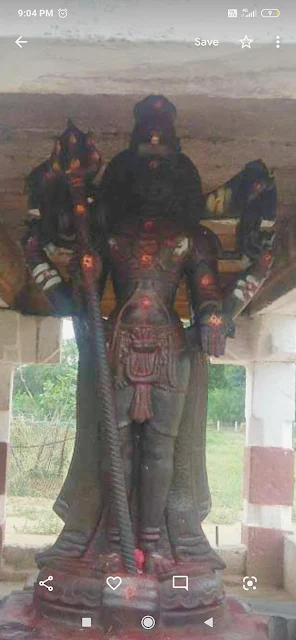HARIHARA SWAMY TEMPLE - THONDAVADA - ANDHRA.
About 10 KM's from Tirupati is a small town called Thondavada, which down the history would have boasted about many temples including Venkateswara temple called Thimmappa, Agastyeshwara temple, and other temples.
The Agasteshwara Swami Temple is in a huge compound adjascent to the Swarnamukhi river flowing behind.
The temple compound from the back has a gate, which opens into the River with steps.
In the centre of the River, Swarnamukhi is a beautiful Mandapam, which seems to be as old as the temple itself and my estimation is of (500 - 1000) years old.
In the Mandapam is a unique sculpture of Shiva and Vishnu standing in the same Idol of about 8 to 9 feet from the pedestal facing opposite sides. The Mandapam does not have a Vimana.
SHIVA
The Idol of SHIVA is placed on the pedestal which is carved like a Lingam. Jata tied up on the head like a coconut, with snakes as haaram, round bracelets in all arms ( Chaturbhuja) and anklets well ornamented belt like jewellery on the hip. The deer skin flowing up to the knee. The fore right hand holding a Trishul with Damru. The back hand holding a snake. The left fore hand in Varada mudra and the back hand holding the deer.
VISHNU
The VISHNU idol is standing on a Padma placed on a square pedestal. Highly ornamented with Kirita, Haarams, bracelets and anklet. Beautifully decorated hip downwards in a drape. Chaturbhuja with Shankha and Chakra on the back hands. Varada hastha and Kati hastha by the fore hands.




Comments
Post a Comment